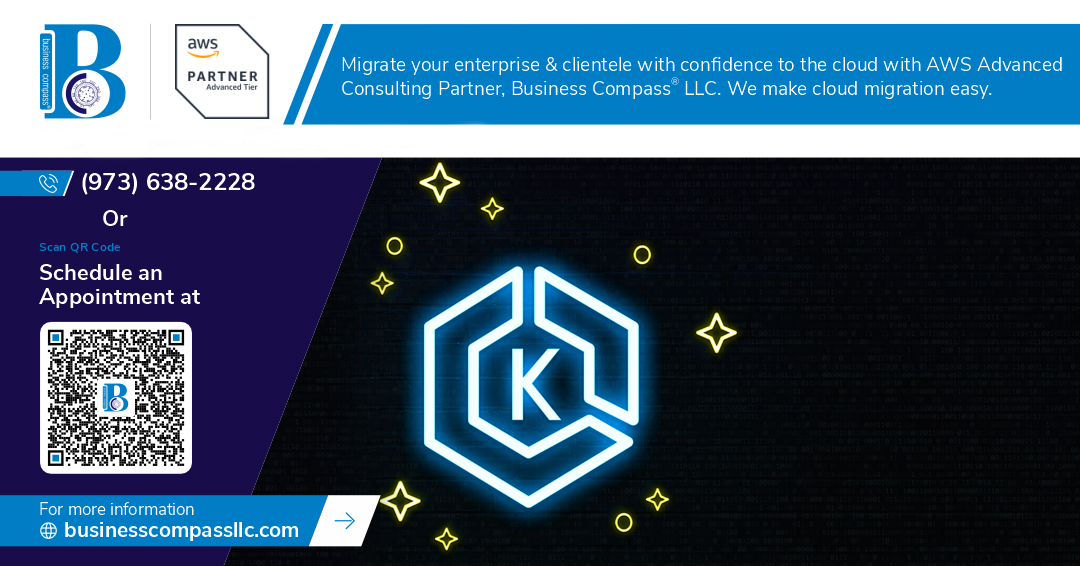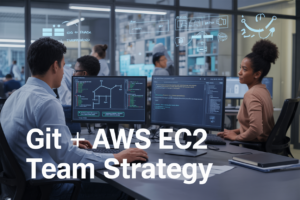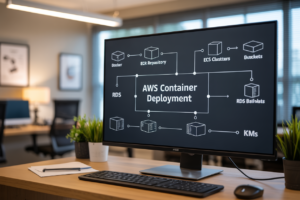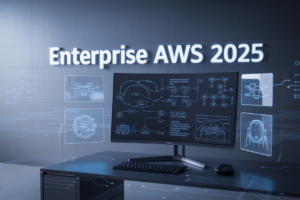Is your AWS infrastructure slowing you down? 🐌 In today’s fast-paced digital world, every millisecond counts. Whether you’re running a small startup or managing a large enterprise, the performance of your compute resources can make or break your business. From EC2 instances to serverless Lambda functions, and containerized workloads on Fargate, ECS, or EKS, optimizing these services is crucial for success.
But here’s the challenge: performance tuning in AWS is complex. With a myriad of services and configurations available, it’s easy to get lost in the maze of options. How do you ensure your EC2 instances are right-sized? What’s the secret to crafting lightning-fast Lambda functions? And how can you squeeze every ounce of performance from your containerized applications? 🤔
In this comprehensive guide, we’ll dive deep into the world of AWS compute optimization. We’ll explore everything from understanding key performance metrics to implementing advanced tuning techniques. By the end, you’ll have the knowledge to supercharge your AWS infrastructure, boost application performance, and potentially slash your cloud bills. Let’s embark on this optimization journey and unlock the full potential of your AWS compute resources! 🚀
Understanding AWS Compute Services
A. EC2: Flexible virtual servers
Amazon Elastic Compute Cloud (EC2) offers scalable computing capacity in the AWS cloud. It provides a wide range of instance types optimized for different use cases, allowing you to choose the right mix of CPU, memory, storage, and networking capacity for your applications.
Key features of EC2 include:
- Instance types: General purpose, compute-optimized, memory-optimized, storage-optimized, and accelerated computing
- Elastic scaling: Easily scale up or down based on demand
- Pay-per-use pricing: Only pay for the compute capacity you actually use
| Instance Family | Use Case | Key Characteristics |
|---|---|---|
| T3 | Burstable performance | Baseline CPU with ability to burst |
| M5 | General purpose | Balanced compute, memory, and networking |
| C5 | Compute-optimized | High-performance computing, batch processing |
| R5 | Memory-optimized | High-performance databases, in-memory caches |
| I3 | Storage-optimized | High I/O, NoSQL databases, data warehousing |
B. Lambda: Serverless functions
AWS Lambda is a serverless compute service that runs your code in response to events and automatically manages the underlying compute resources. It enables you to run code without provisioning or managing servers.
Benefits of Lambda:
- Automatic scaling
- Pay only for the compute time you consume
- Supports multiple programming languages
- Integrates seamlessly with other AWS services
C. Fargate: Serverless containers
Amazon Fargate is a serverless compute engine for containers that works with both Amazon Elastic Container Service (ECS) and Amazon Elastic Kubernetes Service (EKS). It allows you to run containers without managing the underlying infrastructure.
Key advantages:
- No server management required
- Pay-per-task pricing
- Isolation and security for each container
- Easy integration with other AWS services
D. ECS: Container orchestration
Amazon Elastic Container Service (ECS) is a fully managed container orchestration service that makes it easy to run, stop, and manage Docker containers on a cluster of EC2 instances.
ECS features:
- Automated container and instance management
- Integration with other AWS services
- Support for Docker Compose
- Task definitions for multi-container applications
E. EKS: Managed Kubernetes
Amazon Elastic Kubernetes Service (EKS) is a managed Kubernetes service that makes it easy to run Kubernetes on AWS without needing to install and operate your own Kubernetes control plane.
EKS benefits:
- Highly available and secure Kubernetes clusters
- Easy integration with AWS services
- Automatic updates and patching
- Support for running containers on EC2 or Fargate
Now that we’ve covered the core AWS compute services, let’s explore the key performance metrics for these services to help you optimize your workloads effectively.
Performance Metrics for AWS Compute
CPU utilization
CPU utilization is a critical performance metric for AWS compute services. It measures the percentage of time the CPU spends processing instructions, indicating how hard your instance is working. Monitoring CPU utilization helps identify bottlenecks and optimize resource allocation.
- High CPU utilization (>70%): May indicate the need for scaling or optimization
- Low CPU utilization (<30%): Suggests potential over-provisioning
Here’s a comparison of CPU utilization across different AWS compute services:
| Service | CPU Utilization Characteristics |
|---|---|
| EC2 | Fully customizable, varies by instance type |
| Lambda | Limited to execution duration, auto-scaled |
| Fargate | Configurable CPU units, container-level control |
| ECS | Dependent on task definition and cluster capacity |
| EKS | Managed at pod and node levels |
Memory usage
Memory usage is another crucial metric for AWS compute performance. It reflects the amount of RAM being used by your applications and processes. Proper memory management ensures efficient operation and prevents performance degradation.
Key points to consider:
- Monitor both physical and virtual memory usage
- Set appropriate memory limits for containers and functions
- Use memory-optimized instances for memory-intensive workloads
Network throughput
Network throughput measures the rate of successful data transfer over a network connection. In AWS compute services, it’s essential for applications requiring high data transfer rates or low-latency communication.
Factors affecting network throughput:
- Instance type and size
- Network interface configuration
- VPC and subnet design
- Use of enhanced networking features
Response time
Response time is a user-centric metric that measures the time taken for a system to respond to a request. It’s crucial for maintaining good user experience and meeting service level agreements (SLAs).
Now that we’ve covered these key performance metrics, let’s explore how to optimize EC2 instances for better performance.
EC2 Performance Optimization
Choosing the right instance type
Selecting the appropriate EC2 instance type is crucial for optimizing performance and cost-efficiency. Consider the following factors when making your choice:
- Workload requirements (CPU, memory, storage, network)
- Application characteristics (I/O-intensive, compute-intensive, memory-intensive)
- Budget constraints
| Instance Family | Best For | Use Cases |
|---|---|---|
| T instances | Burstable performance | Dev/test environments, small databases |
| M instances | General purpose | Web servers, small to medium databases |
| C instances | Compute-optimized | High-performance computing, batch processing |
| R instances | Memory-optimized | In-memory databases, real-time big data analytics |
| I instances | Storage-optimized | Data warehousing, distributed file systems |
Leveraging Auto Scaling
Auto Scaling helps maintain application availability and allows you to dynamically adjust capacity based on demand. Key benefits include:
- Improved fault tolerance
- Better availability
- Cost optimization
To implement effective Auto Scaling:
- Set appropriate scaling policies (simple scaling, step scaling, or target tracking)
- Configure proper cooldown periods
- Use lifecycle hooks for custom actions during scale-out/in events
Optimizing storage with EBS
Elastic Block Store (EBS) optimization can significantly impact EC2 performance. Consider these best practices:
- Choose the right EBS volume type (gp3, io2, st1, sc1) based on your workload
- Implement RAID configurations for increased I/O performance
- Use EBS-optimized instances for dedicated throughput
- Enable encryption for data at rest
Implementing EC2 Enhanced Networking
Enhanced Networking improves network performance by utilizing single root I/O virtualization (SR-IOV). Benefits include:
- Higher packets per second (PPS)
- Lower latency
- Reduced jitter
To enable Enhanced Networking:
- Select a supported instance type
- Use an Amazon Machine Image (AMI) with the appropriate drivers
- Configure the instance to use the Elastic Network Adapter (ENA) or Intel 82599 Virtual Function interface
Now that we’ve covered EC2 performance optimization, let’s explore how to tune Lambda functions for optimal serverless performance.
Lambda Function Tuning
Optimizing function code
Lambda function performance starts with efficient code. To optimize your function:
- Use lightweight dependencies
- Minimize global variable usage
- Implement caching for frequently accessed data
- Utilize asynchronous programming patterns
Here’s a comparison of optimized vs unoptimized code:
| Aspect | Unoptimized | Optimized |
|---|---|---|
| Dependencies | Heavy frameworks | Lightweight libraries |
| Variables | Many globals | Minimal globals |
| Data access | Repeated queries | Implemented caching |
| Programming | Synchronous | Asynchronous |
Managing cold starts
Cold starts can significantly impact Lambda performance. Mitigate their effects by:
- Keeping functions warm with scheduled invocations
- Using provisioned concurrency for critical functions
- Optimizing function size and dependencies
- Leveraging AWS SDK connection reuse
Configuring memory and timeout
Proper memory and timeout settings are crucial for Lambda performance:
- Allocate sufficient memory based on function requirements
- Set appropriate timeouts to prevent unnecessary execution
- Use AWS Lambda Power Tuning tool for optimal configurations
Utilizing provisioned concurrency
Provisioned concurrency ensures your functions are always ready to respond:
- Identify functions that require consistent low latency
- Configure provisioned concurrency based on expected traffic
- Monitor and adjust concurrency levels as needed
- Consider cost implications of provisioned concurrency
Now that we’ve covered Lambda function tuning, let’s explore how to optimize containerized workloads in the next section.
Containerized Workload Optimization
Right-sizing Fargate task resources
Right-sizing Fargate task resources is crucial for optimizing containerized workloads. To achieve this, consider the following:
- CPU and memory allocation
- Task definition optimization
- Monitoring and adjusting resource usage
Here’s a table comparing different Fargate task sizes:
| Task Size | vCPU | Memory (GB) | Use Case |
|---|---|---|---|
| Small | 0.25 | 0.5 | Low-traffic web apps |
| Medium | 1 | 2 | Microservices |
| Large | 2 | 4 | Data processing |
| X-Large | 4 | 8 | High-performance apps |
ECS cluster optimization techniques
To optimize your ECS clusters:
- Use Auto Scaling groups
- Implement task placement strategies
- Leverage spot instances for cost savings
- Optimize networking with ENI trunking
EKS node group management
Efficient EKS node group management involves:
- Implementing cluster autoscaler
- Using managed node groups
- Optimizing instance types and sizes
- Leveraging Kubernetes Horizontal Pod Autoscaler (HPA)
Container image optimization
Optimize your container images by:
- Using multi-stage builds
- Minimizing image layers
- Leveraging Docker cache
- Implementing image scanning for security
Now that we’ve covered containerized workload optimization, let’s explore the importance of monitoring and observability in maintaining peak performance across your AWS compute resources.
Monitoring and Observability
CloudWatch metrics and alarms
CloudWatch is AWS’s built-in monitoring and observability service, essential for maintaining optimal performance of your compute resources. It provides real-time metrics, logs, and alarms to help you detect and respond to issues quickly.
Key CloudWatch metrics for AWS compute services:
- EC2: CPU utilization, network throughput, disk I/O
- Lambda: Invocations, duration, errors, throttles
- ECS/EKS: CPU/memory utilization, container health
Setting up CloudWatch alarms:
- Define thresholds for critical metrics
- Configure actions (e.g., Auto Scaling, SNS notifications)
- Use composite alarms for complex scenarios
| Metric | Service | Typical Threshold |
|---|---|---|
| CPU Utilization | EC2 | 70-80% |
| Memory Usage | ECS/EKS | 80-90% |
| Error Rate | Lambda | 1-5% |
X-Ray for distributed tracing
X-Ray provides end-to-end tracing of requests as they traverse your application, offering insights into performance bottlenecks and errors in distributed systems.
Benefits of X-Ray:
- Visualize service dependencies
- Identify latency issues
- Troubleshoot errors across services
To implement X-Ray:
- Instrument your application code
- Configure X-Ray daemon
- Analyze traces in the AWS console
Container Insights for ECS and EKS
Container Insights offers detailed performance metrics for containerized applications running on ECS and EKS.
Key features:
- Cluster-level metrics
- Task-level metrics
- Container-level metrics
To enable Container Insights:
- Update cluster settings
- Configure CloudWatch agent
- View metrics in CloudWatch console
Custom metrics for application-specific monitoring
While AWS provides numerous built-in metrics, custom metrics allow you to track application-specific data points crucial for your workload’s performance.
Steps to implement custom metrics:
- Identify key performance indicators
- Use CloudWatch PutMetricData API
- Create dashboards and alarms
Custom metric examples:
- Application response times
- Business-specific KPIs
- Resource utilization ratios
By leveraging these monitoring and observability tools, you can gain comprehensive insights into your AWS compute resources, enabling proactive optimization and rapid issue resolution.
Cost-Performance Balance
A. Spot Instances for EC2
Spot Instances offer a cost-effective way to leverage EC2 resources, providing significant savings compared to On-Demand pricing. These instances utilize unused EC2 capacity, making them ideal for flexible, fault-tolerant workloads. To maximize the benefits of Spot Instances:
- Use Spot Fleet to diversify instance types and Availability Zones
- Implement graceful shutdown mechanisms to handle interruptions
- Leverage Auto Scaling groups with mixed instance types
- Monitor Spot Instance savings and availability using AWS Cost Explorer
| Metric | On-Demand | Spot Instance | Potential Savings |
|---|---|---|---|
| Cost | 100% | 30-90% less | Up to 70% |
| Availability | Guaranteed | Variable | N/A |
| Use Case | Steady workloads | Flexible, interruptible tasks | N/A |
B. Lambda pricing optimization
Optimizing Lambda functions can lead to significant cost savings while maintaining performance. Key strategies include:
- Right-sizing function memory to balance execution time and cost
- Implementing efficient code to reduce execution duration
- Utilizing provisioned concurrency for predictable workloads
- Leveraging AWS Lambda Power Tuning tool for optimal configuration
C. Fargate Spot for containerized workloads
Fargate Spot offers a cost-effective solution for running containerized applications on AWS. To optimize costs:
- Use Fargate Spot for non-critical, interruptible workloads
- Implement proper task placement strategies
- Leverage Auto Scaling to adjust capacity based on demand
- Monitor and analyze usage patterns to identify cost-saving opportunities
D. Reserved Instances and Savings Plans
For predictable workloads, Reserved Instances (RIs) and Savings Plans provide substantial discounts:
- RIs offer up to 72% savings compared to On-Demand pricing
- Savings Plans provide flexibility across EC2, Fargate, and Lambda
- Analyze usage patterns to determine the best commitment strategy
- Regularly review and optimize RI and Savings Plan portfolios
By implementing these cost-optimization strategies, organizations can achieve a balance between performance and cost-efficiency across various AWS compute services.
Advanced Optimization Techniques
Implementing caching strategies
Caching is a crucial optimization technique for AWS compute services. By storing frequently accessed data in memory, caching significantly reduces latency and improves overall system performance. Here are some effective caching strategies:
- In-memory caching with Amazon ElastiCache
- Content caching using CloudFront
- API response caching with API Gateway
- Database query caching
| Caching Strategy | Use Case | Benefits |
|---|---|---|
| ElastiCache | Session data, application state | Reduced database load, faster data retrieval |
| CloudFront | Static assets, dynamic content | Lower latency, reduced origin server load |
| API Gateway | API responses | Improved API performance, reduced backend calls |
| Database caching | Query results | Faster query execution, reduced database load |
Leveraging CDN for content delivery
Amazon CloudFront, AWS’s Content Delivery Network (CDN), plays a vital role in optimizing content delivery. By distributing content across global edge locations, CloudFront reduces latency and improves user experience. Implement the following best practices:
- Configure origin failover for high availability
- Use field-level encryption for sensitive data
- Optimize cache hit ratios with proper TTL settings
Database query optimization
Efficient database queries are essential for optimal performance. Consider these techniques:
- Use appropriate indexing strategies
- Implement query caching
- Optimize slow queries through explain plans
- Utilize read replicas for read-heavy workloads
Asynchronous processing patterns
Asynchronous processing can significantly improve system responsiveness and scalability. Implement these patterns:
- Use Amazon SQS for decoupling components
- Leverage AWS Step Functions for complex workflows
- Implement event-driven architectures with EventBridge
Load balancing and traffic management
Proper load balancing ensures optimal resource utilization and improved performance. Consider these strategies:
- Use Application Load Balancer for HTTP/HTTPS traffic
- Implement sticky sessions for stateful applications
- Configure auto-scaling based on custom metrics
- Utilize Route 53 for DNS-based load balancing
By implementing these advanced optimization techniques, you can significantly enhance the performance of your AWS compute services, ensuring efficient resource utilization and improved user experience.
Optimizing performance across AWS compute services is crucial for maximizing efficiency and minimizing costs. By understanding the nuances of EC2, Lambda, Fargate, ECS, and EKS, and implementing tailored optimization strategies, organizations can significantly enhance their cloud infrastructure. From fine-tuning EC2 instances and optimizing Lambda functions to streamlining containerized workloads, each service offers unique opportunities for improvement.
Continuous monitoring and observability are key to maintaining peak performance. By leveraging advanced optimization techniques and striking the right balance between cost and performance, businesses can create a robust, scalable, and efficient cloud environment. As AWS continues to evolve, staying informed about the latest best practices and regularly reassessing your optimization strategy will ensure your compute resources remain finely tuned and cost-effective in the long run.




















